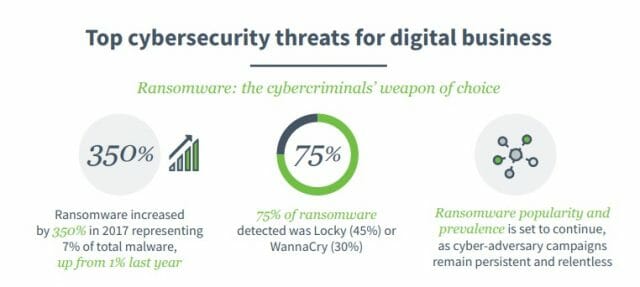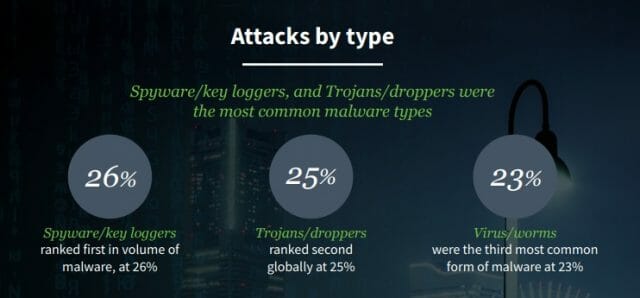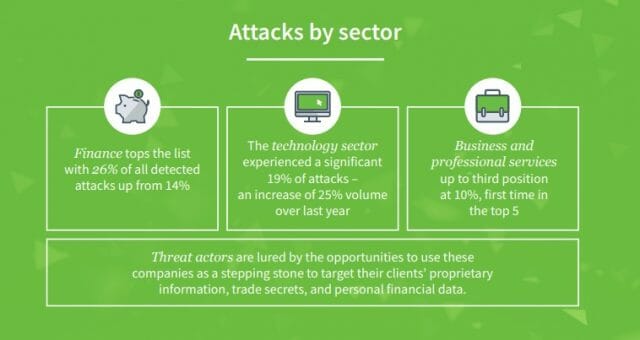According to Dimension Data in its Executive Guide to the NTT Security 2018 Global Threat Intelligence Report, 2017 saw a worrying increase in ransomware and other cyberattacks targeting the supply chain, with the business and professional services sector receiving a significant increase of attacks, particularly in the Europe, Middle East and Africa (EMEA) region, which saw 20% of all attacks targeting this sector. The businesses and professional services sector received 10% of global ransomware attacks, the third most targeted industry, behind finance and technology. It also ranked third in the Americas and was the most vulnerable sector in EMEA, receiving 20% of all attacks.
As ransomware-related outsourced incident response engagements against financial institutions declined, the business and professional services supply chain has clearly become a prime target for trade secrets and intellectual property theft, potentially exposing customer and business partner data.
Some highlights in the NTT Security 2018 Global Threat Intelligence Report include:
- Attacks on the APAC manufacturing sector have dropped to a mere 7%, because of the adoption of enhanced security governance and proactivity in raising cyber defenses.
- Attacks against the finance sector decreased from 46% in 2016 to 26% in 2017, but it remained the most attacked sector in APAC. This was caused by service-specific attacks.
- Increased attacks against education doubled: from 9% in 2016 to 18% in 2017.
- China was the top attack source for manufacturing cyber-incidents, accounting for 67% of hostile activities targeting the sector in EMEA.
- The technology and finance sectors account for 70% of all attacks in the Americas. The US is a world leader in technology innovation while the finance sector collects and stores a vast amount of personal data which cyber criminals can monetise
- Education was the most attacked sector in Australia. With an open network model and collaborative environments that enable connectivity and research between students, campuses, colleges, and universities, this is a valuable target.
Despite the drop in outsourced incident response engagements, the finance sector remains the number one target for cyber criminals who carry out regular reconnaissance to spot potential infrastructure and application vulnerabilities.
Neville Burdan, General Manager for Security at Dimension Data Asia Pacific says, “There are numerous moving parts to supply chains and outsourcing companies, which often run on disparate and out-dated network infrastructures, making them easy prey to cyber threat actors. Service providers and outsourcers are also a prime target, due to their trade secrets and intellectual property. Businesses need to wise-up to the very real threats against them, and ensure all aspects of their operations are robustly and securely protected.”
Technology was the second most cyber-attacked industry in 2017, with a 19% attack volume, with business and professional services moving to third place. Interestingly, attacks on the government sector last year dropped to 5% from 9% in 2016.
In 2017, there was a massive 350% rise in ransomware, representing 7% of all global malware attacks, and is set to continue due to the popularity of cyber adversary campaigns.












